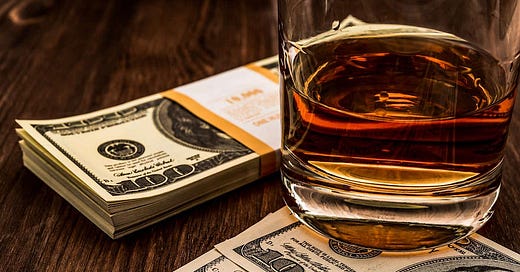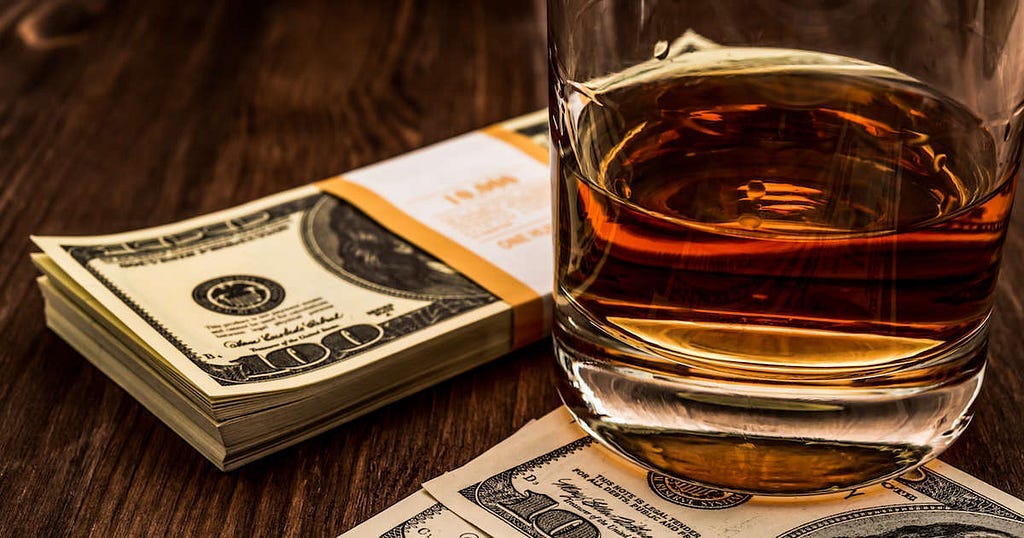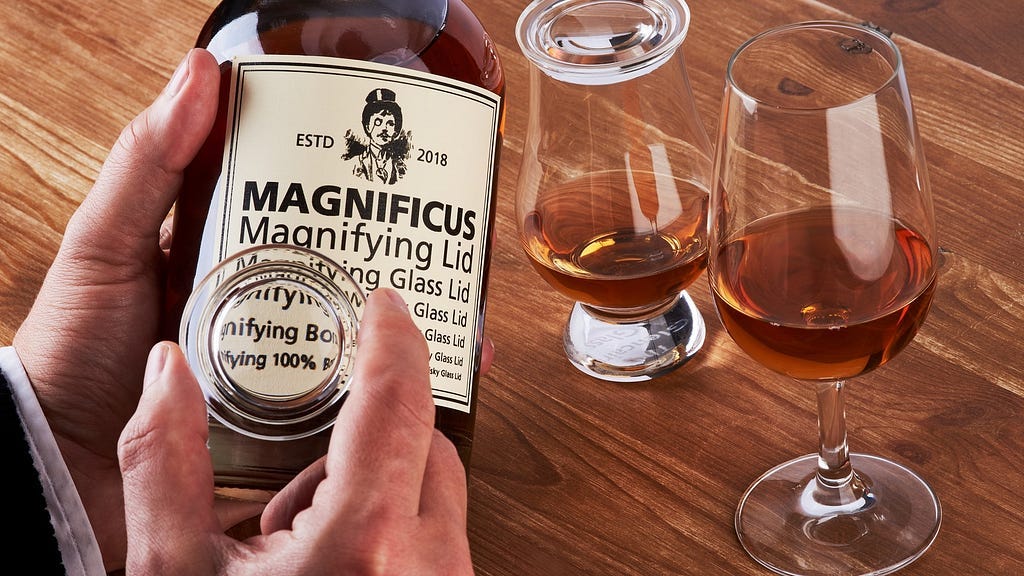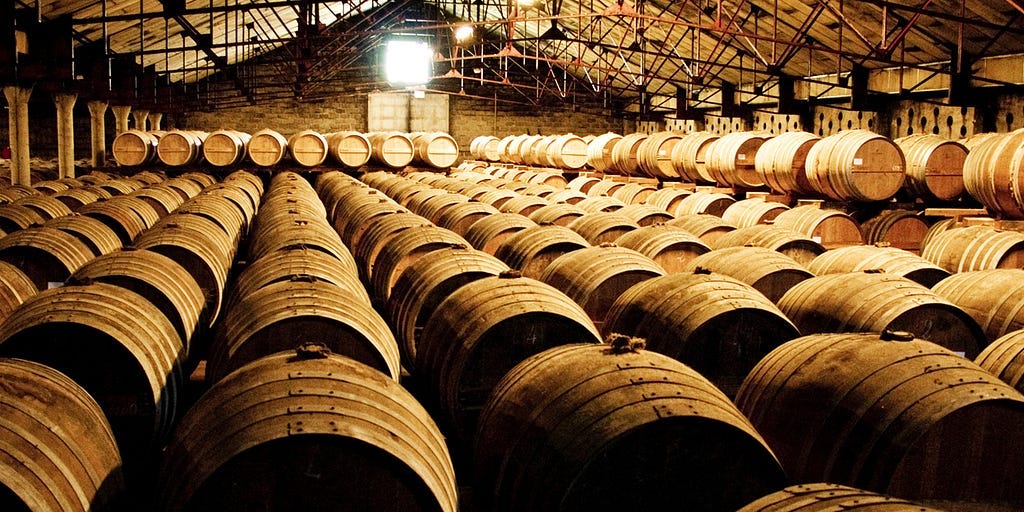Why and How to Invest in Whisky?
Old and rare whisky has proven to be a lucrative investment in the past 10 years, outperforming most securities and other luxury assets. It is also perceived by many as a great hedge and store of value in this wild and erratic financial market. However, how does one start investing in whisky?
In the previously published article ‘Investing in Whisky — The New Gold’, whisky was assessed as a potential investment option. Over the past 10 years, the article highlighted that an investment in whisky could have greatly outperformed the market and other luxury assets, with returns exceeding 500% since 2010.
<a href="https://medium.com/media/71e87ffd7e9e9421743ad013f4af2656/href">https://medium.com/media/71e87ffd7e9e9421743ad013f4af2656/href</a>
An argument (see the article) was also made about collectible whiskies’ viability as a potentially safer medium-term investment option and a better store of value than stocks and bonds, especially in economically uncertain times, since:
Old whisky cannot be produced on demand. A new 50 year old bottle needs at least 50 years maturing in an oak cask. Hence, its supply is inherently limited.
Whisky only gets rarer with time. As time goes by, bottles are consumed by whisky enthusiasts, making a rare whisky even rarer scarcer in quantity.
Whisky is a tangible asset. Unlike stocks or bonds, in times of uncertainty, your whisky cannot ‘default’. It is a hard asset that you can pass down to the next generation.
Minimal costs are associated with whisky ownership. Owning whisky bottles comes with almost no additional costs. If well preserved, in a dark and ambient temperature and humidity, a whisky bottles can last for hundreds of years. Cask ownership on the other hand might carry costs such as maintenance, insurance, bottling and other fees.
The industry is growing and here to stay. Whisky has become a more popular drink globally. With rising wealth in across Asia, especially China, and more investment in marketing, branding, and a customer education, the demand for whisky has been steadily rising and expected to continue to grow at over 7% per year for the foreseeable future.
Luxury products will get more expensive with the widening global wealth gap. In a world of low interest rates, ample liquidity and a widening wealth gap, the rich can only become richer; and so will their appetite for expensive goods and luxury products, driving prices higher.
Since whisky is currently a top performing ‘alternative investment’, many have taken notice and decided to get a piece of the action. But how does someone invest in whisky and identify which whisky to invest in?
What to look for in a whisky?
If you are considering whisky as an investment option, you should only consider investing in rare bottles and casks that contain the highest quality whisky. It is the combination of scarcity and quality that most often peaks the interest of aficionados and investors. However, finding these whiskies is not easy, even for an expert, since many variables must be considered:
Distillery and brand: The whisky distillery and brand are often a large testament of quality.
Rarity: The fewer the bottles, the more valuable a whisky can be.
Age and vintage: As a general rule of thumb, the older the whisky the more valuable it is. Some exceptions do exist for specific limited edition bottles or special vintages.
Cask type: The aging process in a cask is often the biggest contributor to the flavors and quality of a whisky. The cask’s oak type, size, seasoning (e.g. ex-bourbon cask, ex-sherry cask), and preparation process (e.g. toasting and charring) are all key contributors to the flavor profile and characteristics of the end product.
Warehouse and whisky making process: Where and how a whisky is produced and aged are indications of its quality and uniqueness.
Synergies with other whiskies: Collectors often focus on a series of bottles that they consider valuable or specific distilleries that they are most frequently collecting. Hence, bottles with synergies, being part of a collection, with a specific bottle number or a distinct story are more frequently targeted by collectors.
All the variables above are indications of quality and rarity. However, even when ticking most of the boxes, you might notice that some high quality and rare whiskies have no risen in value over the past 10 years. That is because whisky prices, just like ‘hot stocks’, can often surge due to trend investing. For that reason, prices of rare whiskies from well marketed distilleries like Macallan or Bowmore often skyrocket, whereas less renowned distilleries may never appreciate, even if some of their whisky quality can rival that of the most expensive whiskies.
How to invest in whiskies?
Investing in whisky is not as simple as buying stocks, where all you need is a broker account in a trading platform and the minimum deposit requirement. Investing in whisky involves multiple stakeholders and a higher learning curve. There are 3 common types of whisky investments one can make.
1. Buying whisky bottles
The easiest way of investing in whisky is by purchasing and storing bottles either at home, in a safe or in a dedicated storage facility. Choosing the right whisky bottles is where experience and know-how matters most. The most common and safest bet is to select a whisky from a distillery that are sought after by most collectors. However, the potential upside of such an investment is often lower. On the other hand, I try to find less popular bottles that I hold the highest quality whisky — the rare gems — and are still undervalued, since they have yet not been discovered by the mass.
Here are some examples of whiskies and brands that gained popularity among collectors over the past 10 to 20 years. In Scottish single malt, popular distilleries among collectors include Macallan, Spingbank, Ardbeg and Bowmore. Famous American whisky collectibles include Pappy Van Winkle, the Buffalo Trace Antique Collection, older Rittenhouse, Willett and Micther’s bottles and Heaven Hill Parker’s Heritage Collection. Rare Japanese whiskies releases have become very difficult to find due to the rise in popularity and limited supply, with noteworthy collectibles such as aged Yamazaki, Hibiki or Hakushu bottles, the Hanyu card series collection and bottles from Karuizawa, a distillery that was mothballed around 20 years ago.
<a href="https://medium.com/media/9c4f5d64b0081cf67c0e07b9b03ed883/href">https://medium.com/media/9c4f5d64b0081cf67c0e07b9b03ed883/href</a>
If interested in collecting bottles, there are three main methods to purchase your whisky:
Direct purchase: The most reliable way to buy a bottle since it is sourced directly from the distillery or official distributor. As far as retail prices go, you can rarely get a better deal or a better guarantee that bottles are well preserved. Purchasing directly also eliminates the risk of buying a counterfeit bottle, which are available in the parallel and auction markets.
Parallel market: Your friendly neighborhood specialty whisky shop and whisky brokers are considered parallel markets, where bottles are purchased from distributors or private sellers and sold at a markup. Many sellers can be trusted but quality is not always guaranteed, since bottles often pass through many hands before being sold to you.
Auction market: The auction market is where secondary market prices are set and where you can stumble on some of the best or worst deals. Buying from either online or live auctions should be a feat for the experienced only.
When buying iconic and expensive whisky bottles, make sure to deal with trustworthy merchants, brokers and auction houses to avoid buying counterfeits, which are sometimes very hard to distinguish from real bottles for non-expert buyers.
If interested to sell your whisky, it is rather easy, especially in developed countries in Europe or the USA. Whisky bottles are considered relatively liquid (no pun intended) and selling a bottle can take up to 6 months. Sales can be done by submitting items to auctions, through brokers, or via direct sale to a private buyer.
2. Acquiring whisky casks
The natural next step for more a experienced whisky collector and investor is to venture into the world of cask ownership, which requires a specific level of knowhow and whisky passion to purchase a cask. However, more recently, the rising interest to invest whisky as an asset class had a surge of inexperienced whisky investors rushing to own a cask of their own.
For cask ownership, one can either buy a newly filled cask or an older cask that has already been through years of maturation. It is safer to buy an aged cask since the whisky has started exhibiting characteristics its identity through maturation, however the price of aged casks is often higher. Newly filled casks on the other hand are often cheaper and are much riskier — since the quality of the aged whisky cannot be guaranteed — and longer term investment. For maximum returns, one most buy and hold such casks for at least 6 to 10 years before selling, since the value of whisky generally increases with aged. The general rule of thumb is, the more the whisky matures, the higher its value.
<a href="https://medium.com/media/f0ec86384b712c8f795d1de42a8aff2c/href">https://medium.com/media/f0ec86384b712c8f795d1de42a8aff2c/href</a>
There are two main methods to purchase whisky casks:
Distillery: Casks purchased and matured at a distillery are often the rarest and most valuable. Such casks are much rarer to find and allow the investors to build relationships with distillery management and staff. In the past, this model was employed frequently by distilleries as a method to increase their liquidity — since the whisky business is capital intensive. However, in the past 10 years, most distilleries discontinued these programs due to the logistical difficulty of the B2C (Business to Consumer) cask ownership model.
Cask brokers: Brokers are intermediaries in the purchase of a whisky cask. They have an established relationships with various distilleries and private clients and often provide clients with a variety of cask options. However, dealing with brokers can be challenging. If you are not very experienced in whisky, brokers can often take you for a ride. Therefore, when buying a cask from a broker, make sure to consult whisky experts or experienced buyers to get their opinion on the cask you are trying to purchase and on the ideal entry and exit price.
It is worth noting that buying a cask comes with many risks. A cask might have off-notes that can ruin the whisky during maturation, alcohol in the whisky can sometimes evaporate excessively during the aging process — whisky evaporation is a phenomena known as the angel’s share — and whisky can sometimes reach its peak early impacting its resell value. Moreover, investing in casks instead of whisky bottles carries additional costs such as cask warehousing, insurance, bottling, VAT (if bottled) and trading fees (if sold), which can be sizeable compared to the initial investment.
3. Investing in a whisky fund
Private whisky funds are being assembled to meet the rising appetite to invest in whisky, where investors are offered the opportunity to buy shares of a portfolio of rare whiskies, without having to go through the hassle of selecting the ‘right whisky’ or storing it. These financial products are being listed on regulated markets and are accessible to retail investors. However, whenever considering any type of fund, one must be mindful of the management and other fees applied, which can often impact long-term compounded returns.
“If you decide to invest in whisky, you will discover that the hardest part of the investment is practicing self-restraint to avoid drinking your investment.”
Finally, investing in whisky is not an easy task, it takes a great deal of research, expertise and patience. Like every other investment, it also carries risks. It can however be very enjoyable if you already have a passion for single malts and other whiskies, an affinity for rare and valuable things or simply want to discover an interesting world marrying sciences and art. However, if you decide to invest in whisky, you will discover that one of the hardest part of the investment is practicing self-restraint to avoid drinking your investment.
Jimmy is a whisky enthusiast and a long-standing collector with over 10 years of experience. He specializes in Scottish whisky and has a deep understanding of whisky economics and pricing. He built a whisky collection of many unique bottles over the years and owns numerous casks maturing in various distilleries across Scotland
The information in this article should not be regarded as investment advice, but merely as an informative overview on investing in whisky






